All Rise for Yeasted Doughnuts

You can’t get very far in America without running into a donut shop. We have embraced the history of this dessert found all over the world and made it into our own. Of course, doughnuts as we know them today in America came to Manhattan by way of Dutch settlers who called them olykoeks or translated "oily cakes." It is by far the top grossing sweet treat being sold on the market today with over 10 billion served a year! Every culture around the world has been making a version of yeasted doughnuts (or donuts if you prefer) for generations and generations.
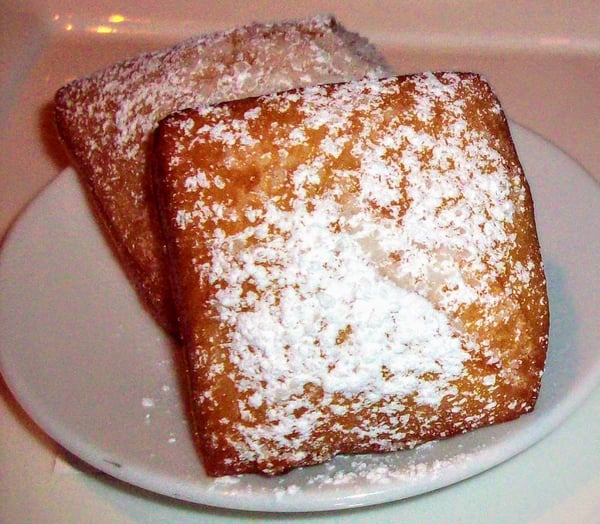
Beignets are a popular square version of a yeasted doughnut that are very much the heart and soul of New Orleans but originated in France. You may have heard of Berliner or Bismarck donuts from Germany that were made famous by JFK or Mexican Churros or Loukoumades, which are a Greek fried donut hole. Donut dough can be found in all different shapes and sizes all around America with roots spanning all around the globe. Paczki are very popular doughnut that hail from Poland, are usually consumed around Lent and are now a Fat Tuesday tradition here in America.
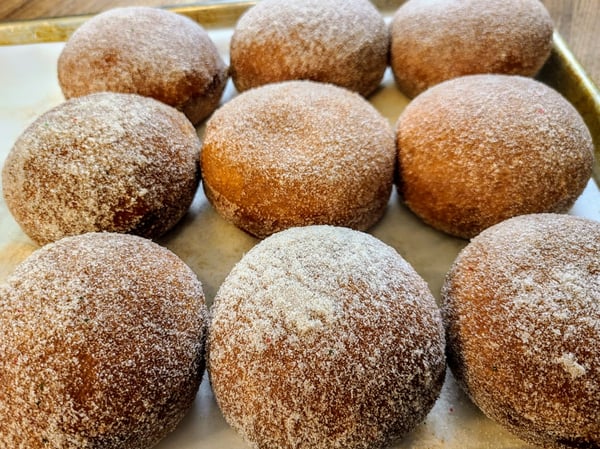
In my Sicilian family, we grew up with bomboloni, which loosely translates to “bomb.” This Italian doughnut has a hint of orange zest and vanilla in the dough, it is coated in sugar, and is always stuffed with a delicious filling. I have filled my bomboloni with Nutella, pastry cream, preserves, or even a sweetened ricotta cream. These extravagant doughnuts were always a special treat to make and eat with my family. I was honored when I was contacted by Giovanni Cesarano of King Umberto’s a restaurant in New York City to teach a private one on one donut and bomboloni virtual cooking session. During class, we recipe tested and troubleshooted everything that goes into what really makes a great fried yeasted dough.
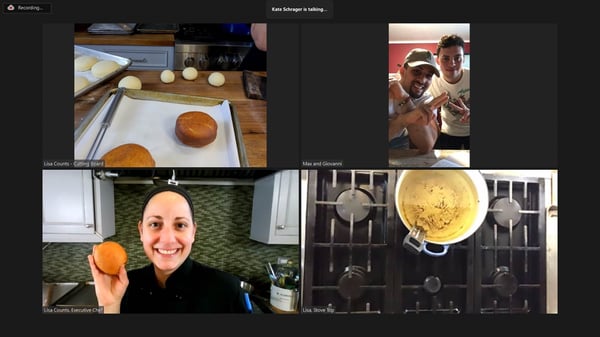
If you are ever in New York, you need to stop and try his version of a bomboloni that he is making with all of the delectable fillings you can imagine; tell him Lisa from The Chopping Block sent you! We compared his own personal bomboloni recipe to our TCB classic yeast raised donut that I am sharing below in order to achieve the epitome of a light, airy, golden brown fried doughnut.
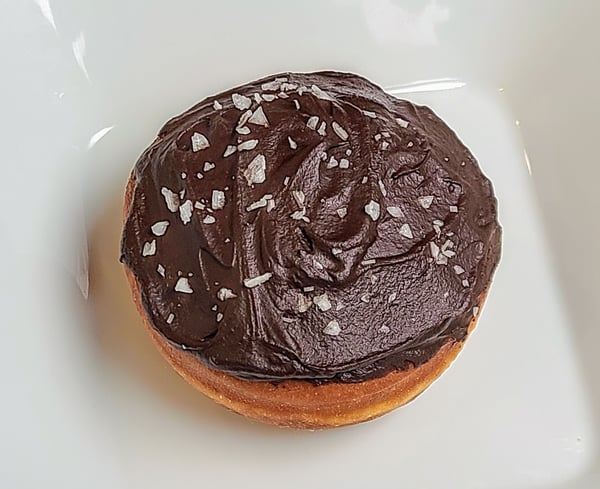
TCB yeast dough with salted caramel pastry cream and chocolate ganache
Yeast-Raised Donut Dough
Scroll down for a printable version of this recipe
Yield: 20-25 donuts
Active time: 40 minutes
Start to finish: 2 hours, 10 minutes
2 cups milk
1 stick unsalted butter
2/3 cups granulated sugar
1 teaspoon fine sea salt
1/2 cup lukewarm water (110° to 120°)
2 tablespoons active dry yeast
6 1/2 to 7 cups all-purpose flour
1 1/2 teaspoons baking powder
Oil for frying
- Gently heat the milk, butter, sugar and salt in a small saucepan until the butter has melted. Set aside to cool.
- Measure the warm water and yeast in the bowl of a stand mixer fitted with the paddle attachment. Allow to proof for about 5 minutes or until the yeast is frothy.
- Once the milk/butter mixture has cooled to lukewarm, pour it into the yeast mixture. Add half of the flour and the baking powder.
- Mix the dough on low speed until the flour is incorporated. Increase the speed to medium and beat until well combined.
- Add the remaining flour, mixing on low speed, and then increase the speed to medium and beat well.
- Switch to the dough hook attachment. Beat on medium speed until the dough pulls away from the bowl and becomes smooth and elastic, 5 to 6 minutes. The dough will be slightly sticky.
- Cover the bowl with plastic wrap and allow the dough to rise until doubled in size, 1 to 1 ½ hours.
- Long Johns Shape: Take the dough and place it on a floured surface. Roll the dough out into a 1/2-inch-thick rectangle. Using a floured bench scraper, cut the dough into 1” x 6” strips.
- Round Filled Shape: Take the dough and place it on a floured surface. Roll the dough out into a 1/2-inch-thick circle. Use a 2 1/2- to 3- inch biscuit cutter to cut out rounds.
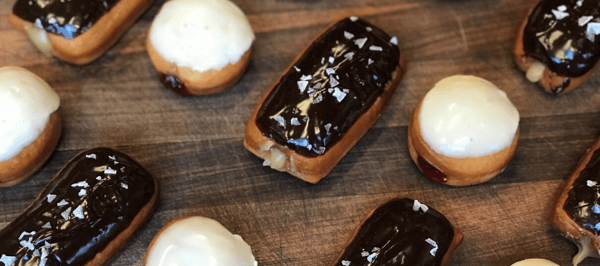
Note: Scraps may be rerolled and cut once.
- Place the shaped dough on floured sheet trays and cover with kitchen towels. Allow to rise for 30 minutes.
- Heat the oil in a French oven to 365º.
- Fry the donuts 3 or 4 at a time for 1 to 2 minutes per side or until light golden brown. Adjust the flame under the pot to keep the temperature as close to 365º as possible.
- Using a deep skimmer, transfer the donuts to a rack set over a sheet tray or paper towels. Allow to cool before filling and glazing.
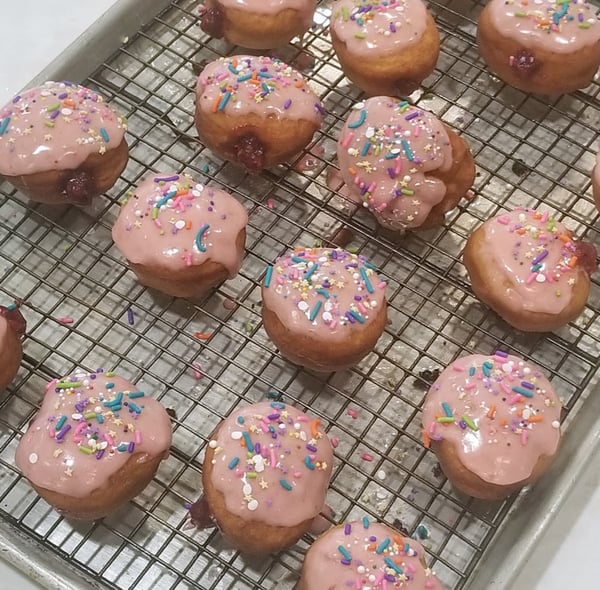
Now you may think that all yeasted doughnuts are the same no matter what they are called or where they come from, but every great grandma out there can tell you they are different and theirs is the best. I want to give you a rundown of standard baking ingredients, what they do, and how they affect the final result of your baked goods.
These were some of the things that Giovanni and I were able to discuss in detail in our private class. His recipe had eggs where ours does not. Was his better or worse, no just different. By adding/omitting/changing the amounts of any given ingredient in a recipe, it will change the entire outcome of the product for better or for worse!
Baking Ingredients
- Baking Powder
Baking powder is a leavening agent, which causes your batter to rise. It has a built-in acidic ingredient, so you don’t need to add anything else (unlike with baking soda). Too much baking powder results in a bitter tasting product. If you do not use enough, you will end up with a tough cake with little volume.
- Baking Soda
Baking soda is pure sodium bicarbonate and needs to be paired with an acidic ingredient like citrus, honey, chocolate, yogurt or buttermilk. It is also a leavening agent and if you use too much, you’ll have a soapy and coarse cake.
- Butter
Butter in particular adds richness, texture, and moisture, but what you may not know is it also helps in leavening. Too much will result is a softer, flatter baked good.
- Eggs
Eggs do a ton in baking. They act as a leavening agent by adding volume. They are a binder, meaning they keep the finished product together. You can use the whole egg for flavor, binding or thickening. Egg whites are a drying agent and add moisture and stability. Egg yolks with a high fat content contribute to texture and richness and act as great emulsifiers.
- Flour
Flour binds ingredients together in baking. When flour protein is combined with moisture and heat, it develops into gluten. Different types of flours have different levels of protein, which are suitable for various baked goods.
- Milk
The protein in milk softens, contributes moisture, adds color, and flavor to baked goods. In terms of function, it may seem contradictory but milk gives dough strength and structure, as well as adds tenderness, flavor, and moisture.
- Salt
Salt does a couple of different things in baking. For one, it helps preserve the color and flavor of flour. In doughs, it controls of the fermentation rate of yeast and strengthens the gluten protein formation. Though it may seem salt is out of place in sweet recipes, it really enhances the flavor.
- Sugar
Sugar performs a number of different functions you are probably not aware of. Besides just sweetening the product, it adds texture by keeping your baked foods soft and moist. It is another leavening agent with the help of fat, eggs, and liquid ingredients and it contributes to overall color.
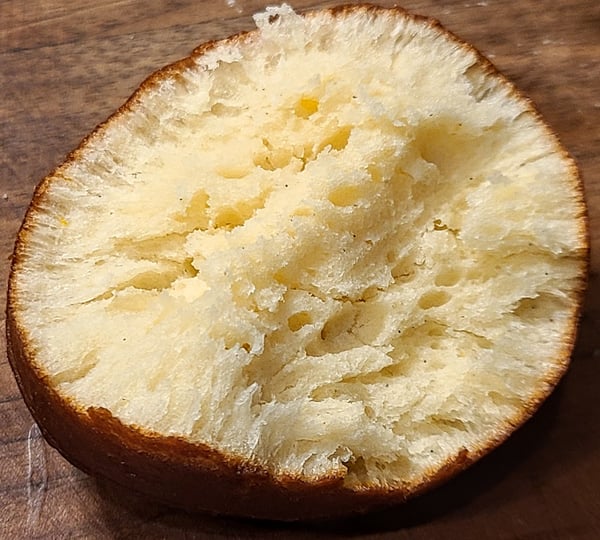
The perfect combination of ingredients create a light, crisp exterior and soft, airy interior with great chew and air pockets in yeasted doughs
If you want to try making your own doughnuts at home and are interested in learning more about yeasted doughs in general be sure to sign up for our virtual Paczki class this Saturday, February 13 at 3pm CST.
Or maybe you would prefer a virtual private lesson like I had with Giovanni versus a public virtual cooking class and have a chance to go in-depth on any given cooking subject you may want to learn or other culinary techniques you may want to perfect.
Either way, I hope you join me in making donuts for this week's challenge in The Chopping Block's private Facebook group. Share your successes (or failures, and perhaps I can help!) with our group!


Yeast-Raised Donut Dough
Ingredients
- 2 cups milk
- 1 stick unsalted butter
- 2/3 cups granulated sugar
- 1 teaspoon fine sea salt
- 1/2 cup lukewarm water (110° to 120°)
- 2 tablespoons active dry yeast
- 6 1/2 to 7 cups all-purpose flour
- 1 1/2 teaspoons baking powder
- Oil for frying
Instructions
- Gently heat the milk, butter, sugar and salt in a small saucepan until the butter has melted. Set aside to cool.
- Measure the warm water and yeast in the bowl of a stand mixer fitted with the paddle attachment. Allow to proof for about 5 minutes or until the yeast is frothy.
- Once the milk/butter mixture has cooled to lukewarm, pour it into the yeast mixture. Add half of the flour and the baking powder.
- Mix the dough on low speed until the flour is incorporated. Increase the speed to medium and beat until well combined.
- Add the remaining flour, mixing on low speed, and then increase the speed to medium and beat well.
- Switch to the dough hook attachment. Beat on medium speed until the dough pulls away from the bowl and becomes smooth and elastic, 5 to 6 minutes. The dough will be slightly sticky.
- Cover the bowl with plastic wrap and allow the dough to rise until doubled in size, 1 to 1 ½ hours.
- Long Johns Shape: Take the dough and place it on a floured surface. Roll the dough out into a 1/2-inch-thick rectangle. Using a floured bench scraper, cut the dough into 1” x 6” strips.
- Round Filled Shape: Take the dough and place it on a floured surface. Roll the dough out into a 1/2-inch-thick circle. Use a 2 1/2- to 3- inch biscuit cutter to cut out rounds.
- Note: Scraps may be rerolled and cut once.
- Place the shaped dough on floured sheet trays and cover with kitchen towels. Allow to rise for 30 minutes.
- Heat the oil in a French oven to 365º.
- Fry the donuts 3 or 4 at a time for 1 to 2 minutes per side or until light golden brown. Adjust the flame under the pot to keep the temperature as close to 365º as possible.
- Using a deep skimmer, transfer the donuts to a rack set over a sheet tray or paper towels. Allow to cool before filling and glazing.


